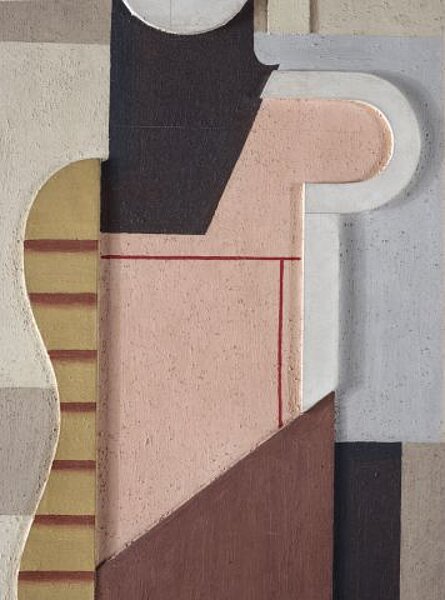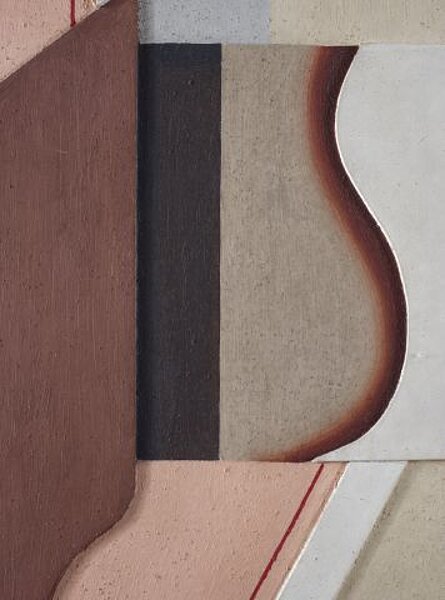
Baumeister, Willi
Mauerbild Schwarz-Rosa
1923
| Object description | Oil, wood, sand on plywood |
|---|---|
| Object category | image |
| Material |
support:
plywood
|
| Technique | |
| Dimensions |
frame dimension:
height: 133,5 cm,
width: 93 cm,
depth: 7 cm
object size:
height: 116 cm,
width: 76 cm
|
| Year of acquisition | 1967 |
| Inventory number | B 134/0 |
| Creditline | mumok - Museum moderner Kunst Stiftung Ludwig Wien |
| Rights reference | Bildrecht, Wien |
| Further information about the person | Baumeister, Willi [GND] |
| Literature |
Laboratorium Moderne/Bildende Kunst, Fotografie und Film im Aufbruch LÉGER.MODERN ART AND THE METROPOLIS 1910 - 1930 Léger La visione della cittá contemporanea |
The beginnings of Willi Baumeister’s “Wall Pictures” lie in 1919, immediately after he returned from the First World War. Inspired by Cubism and Paul Cézanne, and trained in a new conception of form under Adolf Hölzel, Baumeister developed a form of depiction that was not only his artistic début but also his breakthrough. Baumeisters works at this time not only show a tendency towards objectifying and de-emotionalizing his art, but also a reorientation and even linking up of previously separate art forms. As Baumeister himself emphasised in various contexts, the division between fine and applied arts lost any meaning for him. For his “Wall Paintings “Willi Baumeister chose the surface of the wall as the axis of the picture space. From there he either worked into the depths of the wall or build up plastic forms from it. He had a preference for contrasts in the forms, colours, and surface textures: ‘round’ is set against ‘angular’; ‘organic’ against ‘geometric’; ‘light’ against ‘dark’; ‘raw’ against ‘smooth’ and ‘raised’ as against ‘deepened’: In these compositions from the Twenties—including “Black-pink Wall Picture”—Baumeister attempted to express the principles of art and, in particular, the human figure. In 1922 Willi Baumeister was introduced in laudatory terms in the French magazine L'Esprit Nouveau published by Le Corbusier and Amédée Ozenfant: If Willy Baumeister's work merits a special article here, it is because the artist genuinely strives for clarity. There is no trace of sentimentality in his paintings and "wall pictures". The sole means of expression is the relationships of angles and planes. His rational and clear pictorial compositions do him honour. Surrounded by prejudices that the best of the French painters find detestable, he endeavours to give spirit to the walls and to breathe life into surfaces.”
© mumok – museum moderner kunst stiftung ludwig wien


